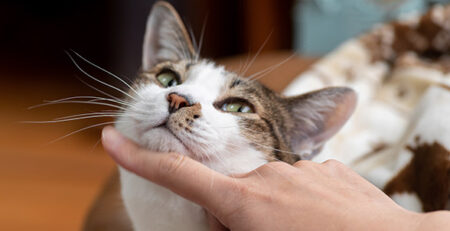Table of Contents
Moving house with cats and dogs in sight? Here’s how to make it less stressful for your four-legged friends
Moving is a common event in the lives of many families but can be a significant source of stress for dogs and cats.
Indeed, dogs and cats are sensitive to change, and suddenly finding themselves in a new environment can cause them anxiety and discomfort.
However, with a number of small steps, even moving can be managed in a way that minimizes the annoyance of the four-legged.
In fact, the key to a stress-free dog or cat move is to play ahead by preparing them for the change.
Before the move: prepare the space
A move is generally planned well in advance.
This gives you an opportunity to put in place a number of preventive actions to help dogs and cats adjust to your new environment.
First, set up an area in the new house where the dog or cat can take refuge in peace as soon as you move in.
This space should be equipped with kennels, pillows, toys and blankets but also with familiar items such as bowls or tray containing litter, in the case of a cat.
Place the animal’s items in the new home as closely as possible to how they were arranged in the old home.
Visual and olfactory landmarks can help reduce anxiety and provide a sense of stability and security.
How to make a move with a cat: watch out for dangers and escape routes in the new home
Organize the new apartment so that it is cat-friendly.
Preemptively secure windows, balconies, patios and gardens with fall and escape protection nets.
Cat nets made of high-strength nylon and transparent, do not disfigure the design of facades and gardens, and can be installed without the need to apply for permission.
How to make a stress-free move for your dog: walks in the new neighborhood
First, before the move, you can take the dog to the new neighborhood for walks, keeping to his usual schedule and respecting his daily routine.
In doing so, he will begin to familiarize himself with the new smells of the area where the house you will be living is located.
The sooner he becomes familiar with new spaces, smells and noises in his new environment, the sooner he will feel at home.
The arrival in the new house
Once they arrive in their new home, it is crucial to give the animals time to explore their new environment gradually.
Devote exclusive time to the animal and leave suitcases and luggage alone for a few minutes.
Initially, he limits access to only one room, the one previously set up with his personal belongings and whatever he is in the habit of using.
As he becomes more comfortable, take an exploratory tour of all the rooms together and make all the spaces accessible.
The first few days post move-in and behavior monitoring
If possible, give yourself a few extra days to spend at home with your dog or cat before returning to work.
In the case of the dog, leaving him alone in a new environment could also trigger episodes of genuine separation anxiety.
After the move, it is good to closely monitor the animal’s behavior.
If you notice signs of stress, such as loss of appetite, excessive vocalization or destructive behavior, it is important to intervene, perhaps by consulting a veterinary behaviorist.
An experienced behavioral veterinarian will be able to provide an individualized management plan and recommend behavioral therapies to control anxiety.
To request a consultation with our veterinary behaviorists to refer your dog or cat for a preventive or follow-up visit, contact us to schedule an appointment.
We would also like to remind you that Clinica La Veterinaria is always open h24 every day including holidays and with First Aid service from 8 pm to 8 am.










